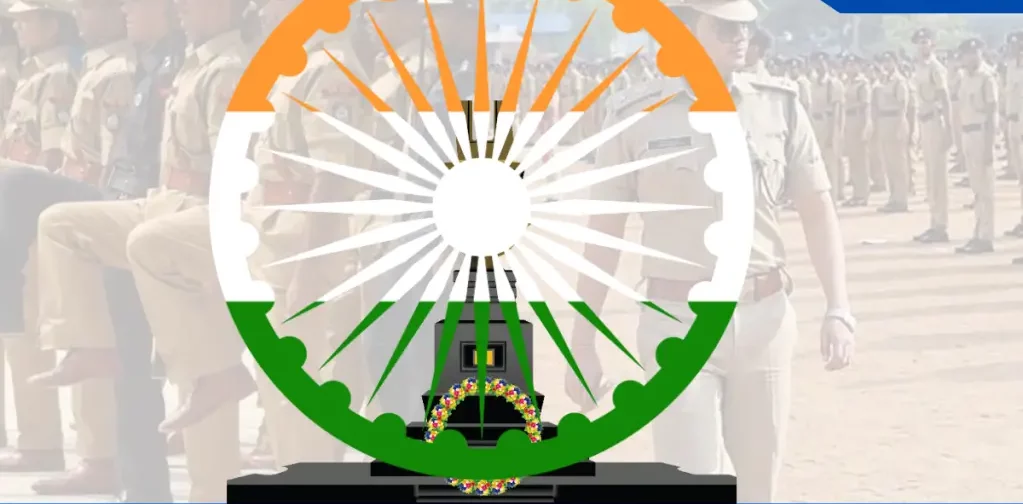
- Home
- About
- Knowledge Center
- Legislative Landscape
- Resources
- #TOGETHERFORBHARA
“The tyrant dies and his rule is over, but when a martyr dies, his rule begins”
This statement justifies all the sacrifices made by police personnel and a soldier. This day reminds us of the incident that happened 64 years ago in the hot spring in Ladakh. When the Chinese attacked the Aksai Chin Region of India, the Intelligence Bureau (IB) and Central Reserve Police Force (CRPF) were allegedly attacked by the People’s Liberation Army (PLA). The Indian government commemorates 75 years of independence and the country’s rich history, culture, and accomplishments with the “Azadi Ka Amrit Mahotsav.” It is devoted to the Indian soldiers who have sacrificed their lives for the nation’s safety and security.
Government Initiatives for Police Martyrs:
The Government of India is dedicated to providing new equipment to the state police forces and the Central Armed Police Forces (CAPF), and the modernization budget supplied by the Center to the states plays an essential role in this regard. The Government of India’s Ayushman CAPF Health Scheme for CAPF Jawans was introduced in Guwahati in January 2021. This will provide significant health security for CAPF troops and their families. Twelve states have begun the process of fully or partially implementing this plan.
Security Related Expenditure (SRE) Scheme:
The Security Related Expenditure Scheme (SRE) was established to augment state efforts to address the Naxalite problem successfully. In February 2005, the scheme was substantially amended, boosting reimbursement rates from 50% to 100% and encompassing new areas and payment items. The revamped arrangement also allows for the advance disbursement of funds to the states. The revised scheme covers 76 districts across nine states (Andhra Pradesh, Madhya Pradesh, Bihar, Maharashtra, Chhattisgarh, Jharkhand, Odisha, Uttar Pradesh, and West Bengal). The Ministry of Home Affairs reimburses 100% of the costs incurred for security-related items, including ex-gratia grants to families of victims of Naxalite violence, logistics and camp facilities provided to the Central Para Military Forces (CPMFs), funds spent on special training provided to State Police personnel, insurance provided to State Police personnel engaged in anti-Naxalite operations, and a lump sum grant to Village Defense Committees (VDCs)/Nagrik Surakasha Samitis (NSSs) for security-related expenses.
National Police Memorial:
A National Police Memorial has been established at Chanakyapuri, New Delhi, in remembrance of the many police officers who sacrificed their lives while carrying out their duties. Police Forces get a feeling of pride in their country, a sense of shared history and destiny, and a sense of identity from the Memorial. The names of almost 35,000 martyrs who gave their lives while doing their duties are listed on “The Wall of Valor,” a 30-foot-tall granite sculpture that sits at a police memorial and honors their bravery and glory.

Image: World Architecture Community
National Police Museum:
A National Police Museum showcases the history, artifacts, police-related news articles, distinctive weaponry, and uniforms of state and federal law enforcement agencies. It is a permanent policing display at the national level. The memorial area of the museum will honor the police officers who lost their lives while serving in the nation’s various law enforcement agencies.

Image: World Architecture Community
These initiatives have been taken by the Government to support the families of the martyrs who have sacrificed their lives for the nation.
August Vollomore rightly captures the essence of being a police personnel. He said, “The Policeman is denounced by the public, criticized by the preacher, ridiculed by the movies, berated by the Newspapers, and unsupported by the prosecuting officers and judges. He is shunned by the respectable. He is exposed to countless temptations and dangers, condemned while he enforces the law and dismissed when does not. He is supposed to possess the qualifications of soldier, doctor, lawyer, diplomat, and educator with remuneration less than that of a daily laborers.”
